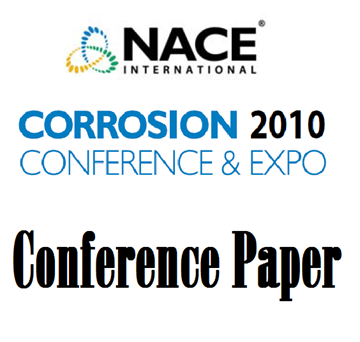Search
10286 A Computational Chemistry Study of Oxidation Mechanism at the Random Grain Boundary of FE-CR Binary Alloy
Also Purchased
10283 Environmental and Metallurgical Parameters Affecting Sulfide Stress Cracking Resistance of High Strength OCTG Steels
Product Number:
51300-10283-SG
ISBN:
10283 2010 CP
Publication Date:
2010
$20.00
10278 A Parametric Study of Sour Corrosion of Carbon Steel
Product Number:
51300-10278-SG
ISBN:
10278 2010 CP
Publication Date:
2010
$20.00
10273 Erosion Corrosion of SS316L Trays in FCC's Sour Water Stripper
Product Number:
51300-10273-SG
ISBN:
10273 2010 CP
Publication Date:
2010
$20.00




